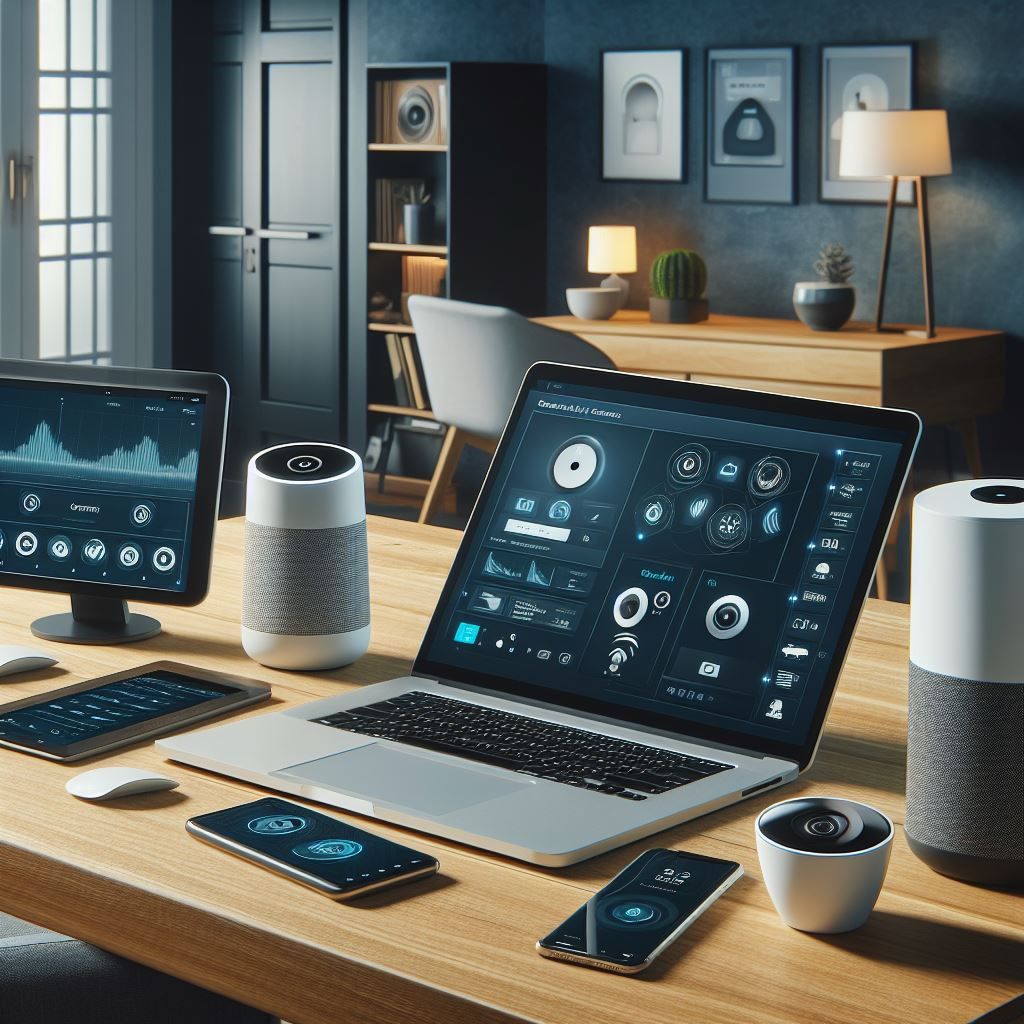
For example, a while ago, I read an article about an FBI agent who experienced a significant security breach. While using his personal home network, the agent connected his work laptop to the Internet. Unfortunately, his network was not secured adequately, leading to a cyberattack that compromised the laptop. As a result, sensitive government data stored on the device was stolen. This incident highlights the critical importance of securing personal networks, especially when they are used to access or handle sensitive work-related information.
Here’s a comprehensive guide on how to secure your smart home against both cyber threats and physical intrusions:-
1. Secure Your Network
- Use a Strong Password: Ensure your home Wi-Fi network is protected with a robust password that combines letters, numbers, and special characters.
- Firewalls and Antivirus: You should have a firewalls and anti virus activated on all your computers, tablets and phones and kept up to date. You should consider having a hardware firewall device sitting between your modem and your local devices.
- Separate Networks: Use multiple Wi-Fi networks to separate your smart home devices from your personal computers and smartphones. This limits the potential for cross-device attacks. I usually set my computer to treat any network as untrusted, even my own home network.
- VPN and Encryption: Employ a Virtual Private Network (VPN) and ensure that your Wi-Fi network is using WPA3 encryption to protect the data transmitted over your network.
2. Update Regularly
- Firmware Updates: Keep the firmware for all connected devices updated to protect against known vulnerabilities. Automatic updates should be enabled where available.
- Software Security: Regularly update the software on your personal devices that interact with your smart home gadgets, such as your smartphone and computer.
4. Enhancing Physical Security
1. Smart Locks and Access Controls
- Homeowners can issue temporary access codes for visitors, babysitters, cleaners, tradesmen, which is more convenient and secure than hiding a spare key under the doormat.
2. Integrated Alarm Systems
- Comprehensive Solutions: Employ a smart home security system that integrates alarms, cameras, and motion sensors. Ensure these systems are monitored and that they can notify you or a security service immediately in case of a breach.
- Visibility: Use signage to indicate that your home is protected by a security system. Visible security measures can be a deterrent to potential intruders.
3. Security Cameras
- Strategic Placement: Install cameras at all entry points and common areas. Ensure cameras are placed out of easy reach and cover each other’s blind spots.
- Covert and Overt Cameras: Covert cameras, also known as hidden cameras, are designed to blend into their surroundings and go unnoticed, making them ideal for monitoring security without drawing attention. In contrast, overt cameras are visibly placed and recognizable, serving as a deterrent to potential intruders by signaling that surveillance is in place. Both types play crucial roles in a comprehensive security system, where covert cameras safeguard against undetected activities, and overt cameras prevent incidents before they happen.
- Cloud Storage: Use cameras that offer encrypted cloud storage to save the footage securely.
5. Use Registered Contractors and Trusted Brands
- Security Alarms, Access Controls and CCTV: When setting up security alarms, access controls, and CCTV systems, it is safer and more secure to employ PSA registered contractors rather than attempting to install off-the-shelf systems on your own.
- Reputation and Support: Invest in smart home technology from reputable brands that are known for their commitment to security and customer support. Enable notifications to alert you when products no longer receive security updates, allowing you to retire or replace them promptly.
- Security Features: Choose products that offer end-to-end encryption and allow for secure user authentication.
6. Balancing Cyber and Physical Security
1. Regular Audits
- Security Assessments: Periodically assess the security measures in place. This includes checking for vulnerabilities in both physical and digital defenses.
- Professional Evaluations: Consider hiring a security expert to evaluate your smart home setup and recommend improvements.
2. Privacy Settings
- Device Configuration: Configure privacy settings on each device according to your personal security needs. Disable unnecessary features that could expose more data than required.
- Network Monitoring: Use network monitoring tools to keep an eye on which devices are connected to your network and how they are being used.
Conclusion
At the minute, I am not aware if we have any service providers providing cyber security support for homes on Tradesmen.ie but if there were IT professionals interested in providing that service, it is something we would be happy to facilitate in the future. However, the good news is that for electrical work, security alarms, and CCTV installations in your home, you can obtain a number of quotes through our website. Click here to explore your options and connect with rated tradesmen and trade professionals.
Cheers
Oliver Dempsey
Tradesmen.ie
11 April 2024
General Tips for hiring a tradesman
Here are some tips to consider when hiring a tradesman:-
1. Ask for phone numbers of references so that you can check them out
2. Check insurance of the tradesman where insurance is required
3. Hire a suitably qualified architect, building surveyor or building engineer if the job is anything to do with a new build, building renovation or extension
4. Agree on some sort of stage payments for the job. Remember that full payment should not be made until the job is complete and has been inspected by you, and if necessary by a certifier.






